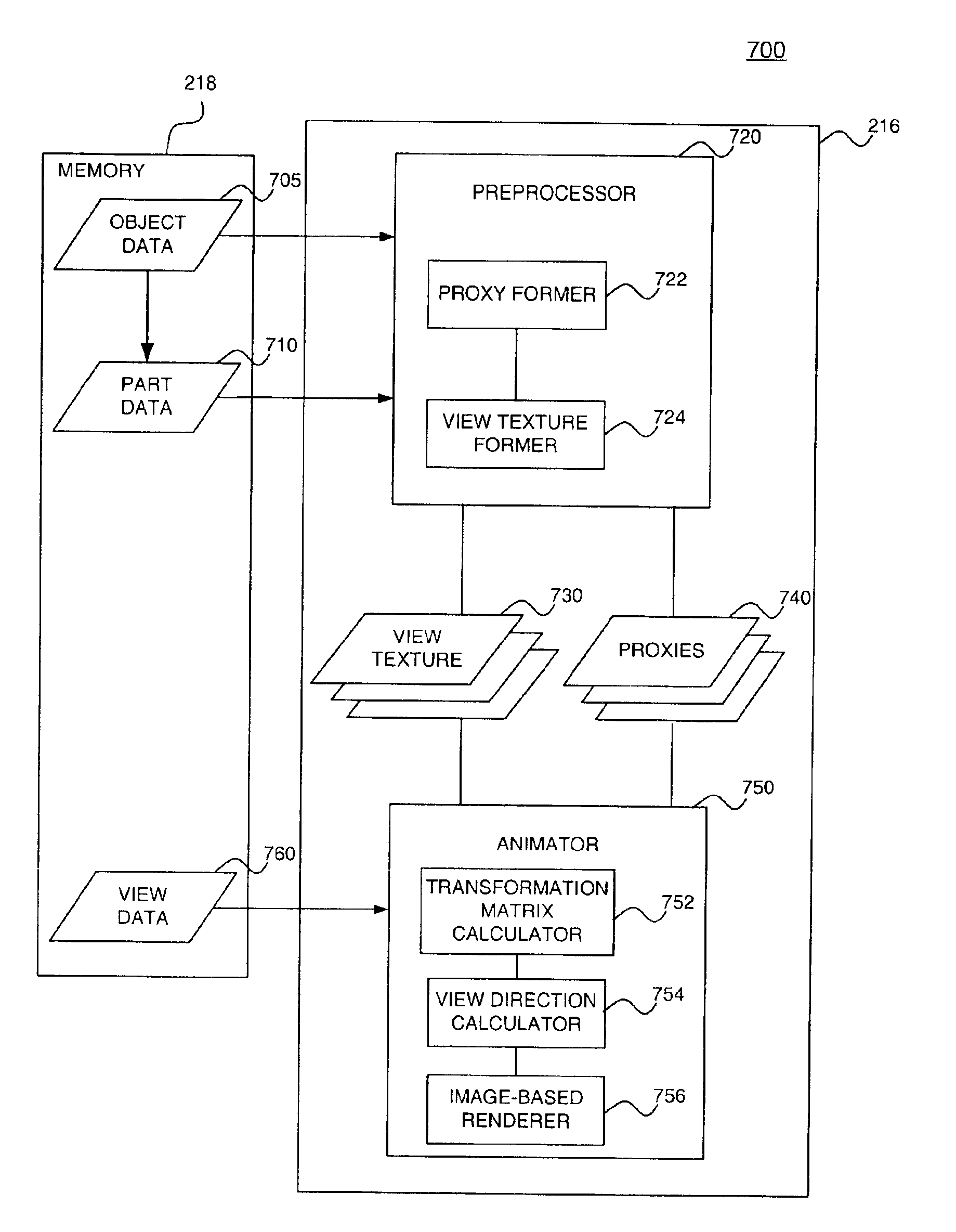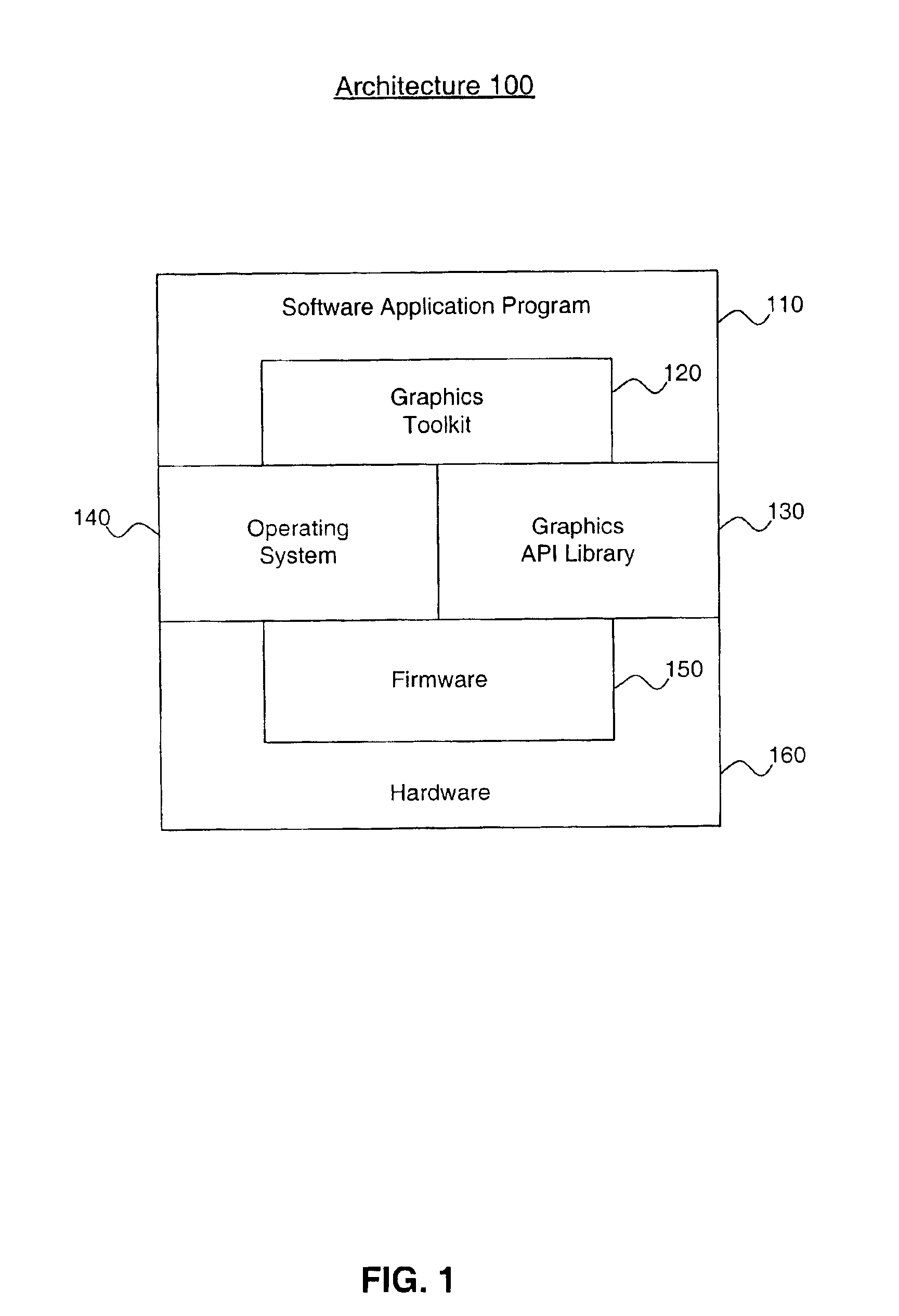System and method for image-based rendering with proxy surface animation
a surface animation and image-based technology, applied in the field of computer graphics including animation, can solve the problems of increasing the number of calculations and other processing work required to fully render the object, affecting the rendering quality of objects, so as to achieve the effect of avoiding burdensome graphics processing and hardware requirements and achieving the immediate level of rendering quality
- Summary
- Abstract
- Description
- Claims
- Application Information
AI Technical Summary
Benefits of technology
Problems solved by technology
Method used
Image
Examples
example method embodiments
OF THE PRESENT INVENTION
[0061]FIGS. 3A and 3B illustrate a flowchart of a method for image based rendering with proxy surface animation according to an embodiment of the invention. The method includes a preprocessing stage 300A, illustrated by the flow chart of FIG. 3A, and an animation stage 300B, illustrated by the flow chart of FIG. 3B.
[0062]In an embodiment, preprocessing stage 300A operates as follows. An object to be animated is divided into parts. Parts can be generally defined as portions of an object of interest that can move independently with respect to the object without changing shape. Next, a proxy surface is formed for each part. For each proxy surface, a set of view textures is obtained. The method then proceeds to the animation stage 300B. As illustrated in FIG. 3A, method 300 comprises steps 305, 310 and 315. Each of these steps will now be described in further detail with reference to the flowchart of FIG. 3A and an example object in FIGS. 4A-4B.
[0063]In step 305,...
example system embodiment
OF THE PRESENT INVENTION
[0082]FIG. 7 shows a graphics system 700 for carrying out methods 300 and 500 according to the present invention. System 700 includes a memory 718, a preprocessor 720 and an animator 750. Preprocessor 720 and an animator 750 both reside in or are executed by processor 716 of a host system (not shown). Processor 716 is communicatively coupled to memory 718, which also resides in the host system. Memory 718 includes object data 705, part data 710, and view data 760.
[0083]Preprocessor 720 includes a proxy former 722 and a view texture former 724. View textures 730 and proxies 740 are passed to animator 750. Animator 750 includes a transformation matrix calculator 752, a view direction calculator 754, and an image based renderer 756.
[0084]The formation of object proxies by proxy former 722 and the formation of view textures by view texture former 724 are summarized above and disclosed in disclosed in further detail in co-pending U.S. application Ser. No. 10 / 197,8...
PUM
 Login to View More
Login to View More Abstract
Description
Claims
Application Information
 Login to View More
Login to View More - R&D
- Intellectual Property
- Life Sciences
- Materials
- Tech Scout
- Unparalleled Data Quality
- Higher Quality Content
- 60% Fewer Hallucinations
Browse by: Latest US Patents, China's latest patents, Technical Efficacy Thesaurus, Application Domain, Technology Topic, Popular Technical Reports.
© 2025 PatSnap. All rights reserved.Legal|Privacy policy|Modern Slavery Act Transparency Statement|Sitemap|About US| Contact US: help@patsnap.com



